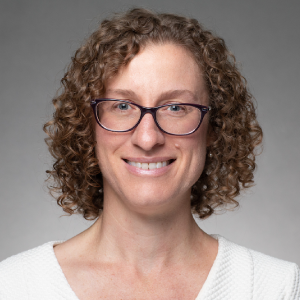Oct 11, 2024
Medicare ABCDs
As roughly 11,000 Americans age into Medicare each day in the United States, it can be helpful to understand what the government-funded health care program and private supplemental plans cover.
“Medicare is complicated, especially for those who are new to the program, and it’s a good idea to understand some basic information about how it works and is structured before you or your loved ones shop,” said Cynthia Phillips, program director of Serving the Health Insurance Needs of Everyone.
The SHINE Program provides free, unbiased Medicare information through highly trained volunteer counselors to beneficiaries throughout Massachusetts all year long. The program is administered by the Massachusetts Executive Office of Elder Affairs under a grant from the federal Administration for Community Living.
Here are important tips for older adults and their families as many begin shopping for a plan during open enrollment, which this year runs from Oct. 15 through Dec. 7:
What is Medicare and what does it cover?
Most people know that Medicare is a federal health insurance program, funded by the government, workers and employers, and available to people at age 65 or who have been deemed disabled for 24 months. But contrary to popular belief, the program was not intended to cover all health care services at no cost. Rather, it provides a core set of basic medical benefits to cover inpatient (e.g., hospital) and about 80% of outpatient (e.g., doctor’s office) care. Medicare members have out-of-pocket expenses, such as deductibles – the amount you pay for covered health care services before your insurance plan kicks in. Medicare members also may have to pay coinsurance, or a percentage of costs, for some services – for instance, with 20% coinsurance, you may owe $200 for a $1,000 medical bill. For more robust coverage and to fill the gaps of Medicare, Medicare Supplement and Part D or a Medicare Advantage plan may be purchased.
So, what are the ABCDs of Medicare?
| Medicare Part A | Covers basic inpatient hospital services. For most people, there is no premium but there is a deductible ($1,632 per stay in 2024) and some coinsurance for extended inpatient hospital and skilled nursing facility stays. |
| Medicare Part B | Covers doctor visits and outpatient services. There is a monthly premium that is usually deducted from your monthly Social Security check, a deductible ($240 in 2024) and, typically, coinsurance of 20% for most services. No coinsurance or deductible is charged for an annual wellness visit or for preventive services such as a mammogram or prostate cancer screening. |
| Medicare Supplement or “Medigap” plans | Help cover the out-of-pocket deductibles and co-insurance associated with Medicare Part A and Part B. Medicare Supplement plans are available through private health plans. |
| Part C or Medicare Advantage plans | Are offered through private plans and cover all of the benefits of Part A and B and then some. These plans provide greater care coordination and additional benefits like dental, vision and hearing coverage. Many also can include Part D prescription drug coverage. Enrollment in Medicare Advantage plans has grown over time, with more than 32 million beneficiaries enrolled in Medicare Advantage in 2024, more than half of all Medicare beneficiaries. |
| Part D plans | Help pay for drug costs and are offered through private plans. Plans vary in their costs, deductibles and covered drugs. Enrollees pay monthly premiums and some of the cost for prescriptions. In 2022, more than 23 million people on Medicare were enrolled in a standalone prescription drug plan. |
When you initially become eligible for Medicare, within seven months around your 65th birthday, you can pick any plan to fill Medicare’s gaps; after that, there are certain times during the year when you can make changes to your plan. Generally, beneficiaries in Massachusetts can purchase Medicare Supplement plans at any time of the year, while Medicare Advantage and Part D can be purchased during the annual enrollment period, which runs from Oct. 15 through Dec. 7, with a Jan. 1 effective date. Certain special enrollment periods allow people to change or purchase plans.
How do the ABCDs work together?
In general, Medicare beneficiaries can:
Get Parts A and B and choose a supplemental plan that fills in the gaps in coverage (Medigap), and add a Part D prescription drug plan.
OR choose a Part C (Medicare Advantage) plan, which provides Part A, B and D benefits along with additional benefits.
When are you eligible for Medicare?
During your working years, you pay a portion of your income (and your employers make a similar contribution) to help finance Part A. Generally, people are eligible for Part A and B when they turn 65.
Most people should enroll in Part B at age 65 unless they or their spouse decide to continue working and have coverage through active employment. When they enroll in Part B, an amount is deducted from their monthly Social Security check. For most people, the deduction will be about $174.70 in 2024, but it can be more for those with higher incomes.
How do you choose between a Medicare Advantage or a Medigap plan?
Generally, Medicare Advantage plans are a good option for people looking for value in their health plan. Many Medicare Advantage plans have low or zero-dollar premiums and offer additional supplemental benefits, such as coverage for prescription drugs, hearing, vision and dental. Medicare Advantage plans also offer a range of network options. Individuals who value care coordination with their primary care provider may choose an HMO plan, while those looking for larger networks may choose a PPO plan. While Medicare Advantage premiums can be quite low, these plans tend to have higher co-pays for health care services so may be less appealing for people who require many services on a regular basis.
Medigap plans are a better fit for people who want predictable out-of-pocket monthly expenses and a wide range of choices for medical care. They’re also good for people who don’t mind paying a bit more in monthly premiums as well as paying for additional plans to cover prescription drugs, vision and hearing. These plans also are popular with “snowbird” retirees who spend the winters in warm-weather locations because they allow you to get care from any doctor who participates with Medicare nationwide.
How do you shop for a plan?
Anyone turning 65 has an initial enrollment period in the seven months around their birthday. Anyone who retires at age 65 or later and gets coverage from their employer should check with their workplace about their options.
Those without employer-sponsored coverage should first decide which of the two Medicare options (Medicare Advantage or Medigap) they’re leaning toward. Within the two options, there are a variety of health plans with a range of benefits, providers, drug coverage, preferred pharmacies and price points.
Here are two resources that can help you find the plan that’s right for you:
- The Centers for Medicare and Medicaid Services, 1-800-MEDICARE (1-800-633-4227), 24 hours a day, seven days a week. TTY users call 1-877-486-2048. The Medicare Plan Finder is located at www.medicare.gov/find-a-plan.
- Serving the Health Insurance Needs of Everyone (SHINE), 1-800-243-4636, SHINE@mass.gov or www.SHINEMA.org.
Older adults also can call or visit the websites of private health plans or chat with an independent expert.
Phillips encourages beneficiaries to speak with someone who is knowledgeable about Medicare for the latest updates to the program, including a cap on what beneficiaries will pay for their medications in 2025 and a reduction in the number of Medicare Advantage and prescription drug plans offered in the state.
An informed Medicare beneficiary is an empowered one, Phillips says: “We want people to understand the program and their options so they can make really good choices for themselves when it comes to their Medicare plan. If people can find a plan that works for them and that they can afford, we believe they’ll be more likely to use it and stay healthy in the long run.”

